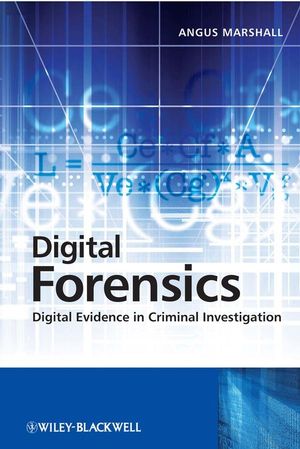Digital Forensics: Digital Evidence in Criminal InvestigationsISBN: 978-0-470-51774-1
Hardcover
180 pages
December 2008, Wiley-Blackwell
 Other Available Formats: Paperback
|
||||||
Acknowledgments.
1. Introduction.
1.1 Key developments.
1.2 Digital Devices in Society.
1.3 Technology and Culture.
1.4 Comment.
2. Evidential Potential of Digital Devices.
2.1 Closed vs. Open Systems.
2.2 Evaluating Digital Evidence Potential.
3. Device Handling.
3.1 Seizure Issues.
3.2 Device Identification.
3.3 Networked Devices.
3.4 Contamination.
4. Examination Principles.
4.1 Previewing.
4.2 Imaging.
4.3 Continuity and Hashing.
4.4 Evidence locations.
5. Evidence Creation.
5.1 A 7-element security model.
5.2 A developmental model of digital systems.
5.3 Knowing.
5.4 Unknowing.
5.5 Audit and Logs.
6. Evidence Interpretation.
6.1 Data Content.
6.2 Data Context.
7. Internet Activity.
7.1 A little bit of history.
7.2 The ISO/OSI model.
7.3 The Internet Protocol Suite.
7.4 DNS.
7.5 Internet Applications.
8. Mobile Devices.
8.1 Mobile Phones & PDAs.
8.2 GPS.
8.3 Other Personal Technology.
9. Intelligence.
9.1 Device usage.
9.2 Profiling and Cyberprofiling.
9.3 Evaluating Online Crime: Automating the Model.
9.4 Application of the formula to Case Studies.
9.5 From success estimates to profiling.
9.6 Comments.
10. Case Studies and Examples.
10.1 Introduction.
10.2 Copyright Violation.
10.3 Missing person and Murder.
10.4 The view of a defence witness.
A The "Aircraft Carrier" PC.
B Additional Resources.
C SIM card data report.
Index.



